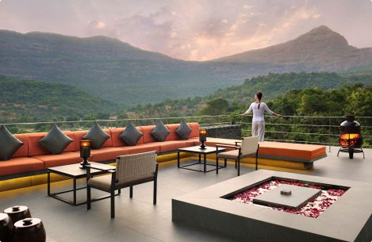
With a penchant for birding tours as I am an avid birder I decided to opt for India this season. Asian Adventures came highly recommended by a friend and I chose to take the Pangot tour with them.
For sheer diversity of habitats and the extraordinary range of bird species and mammals one cannot beat Uttarakhand. Pangot of course is well known as one of the finest birding site.
The birding trip that I took to snow covered Pangot this January was extremely fulfilling. The enchantment of the Dehradun valley encompassed us the moment we drove in.
We had started on the 10th of January from Delhi, taking in the interesting sights of Haridwar and Bijnor along the way. Our litany throughout the journey was birds, birds and birds. We were not disappointed. The Doon valley is an immensely rich space with umpteen varieties of exotic flora and fauna. The topography, lush with vegetation and the pleasant climatic conditions make it a lavish home to birds of many unique varieties. The unusual, the exotic, the rare can all be sighted particularly at Walterre Lodge. The luxury lodge-one of the best among Dehradun resorts is well known as a roosting place for rare birds.
I was very excited, literally over the moon to spy up close the Jungle babbler which roosts at Walterre. We spied the Himalayan vulture, the green tailed and fire tailed sunbird. The black throated sunbird and the Himalayan ruby throat in that short span
The huge variation of birds’ species remarkable in nature’s finery gave me a euphoric high.
The 7-day trip also took us to the Tiger Camp at Corbett. The Long red down covered bill of the Ibis bill immediately attracted my and my companions’attention. We were rewarded at the after-lunch safari by the very much longed for sighting of the Ibis Bill. This bird is must see on the itinerary of many fellow British tourists.
The royal predator, the Pallas’s fish eagle with its light brown hood over a white face enchanted us with its linear symmetry in flight. The Lapwing with its slow, irregular wingbeat in flight and a shrill, wailing cry too was a sighting feat we accomplished.
We also manage to catch a vanishing glimpse of the magnificent tiger which is of course a must at Corbett.
At Dhikala the after-lunch safari let us spot the Rufous woodpecker. And the amazing hour saw the bird quench its thirst with delight.
The kaleidoscope of colors and the grace, magnificence and etherealness of all species of birds was so spectacular that at time I held my breath. Not surprisingly I was often speechless at the way Nature spread out its glory before us. The Colored falconette, shrike like in shape mainly pied with a bold white supercilla and collar striking in form and color. The wingspan is 30 to 35 cms.
Mammals too deigned us with their presence. The Hog deer and the Asiatic elephant were an immense pleasure to behold.
At the morning safari, the alpine swift fluttered by. The white rumped shama too was spotted.
Since Asian adventures work with people who are themselves passionate birders and naturalists, the level of enthusiasm to catch sight of every endemic is perennially high. There were so many sightings of all species of birds as well bonus sightings of other wildlife that I knew the expertise of our guides was opening the door to Nature’s offerings. The natural haven was at its most welcoming and let us into its world with warmth and passion.
After the Tiger Camp, we made our way to snow covered Pangot. The extraordinarily beautiful forested area of Cheena Peak Range via Snow View Point and Kilbury are prime habitats of unusual bird species.
The forests of Pangot and surrounding areas are dominated by thick Oak, Pine and Rhododendron. The streams passing by the area add to the enchantment.
One can see an assortment of bird species along the way to Pangot. The main ones were Lammergeier, Himalayan Griffon, Blue-winged Minla, Spotted & Slaty-backed Forktail, Rufous-bellied Woodpecker, Rufous-bellied Niltava and the Khalij pheasant. One can also spot mammals such as Yellow-throated Himalayan Marten, Sambhar, Himalayan Goral, Barking Deer, Leopard, Civets, Serow, Wild Boar and Red Fox.

Onwards to Sat Taal, the last stop. The interconnected assemblage of seven freshwater lakes that give the place its name is the focal of the terrain’s beauty. Perched at an elevation of 1370 meters above sea level, Sat Taal offers much in terms of scenic beauty, birding and just sheer enjoyment.
We returned home with warm memories of the trip.
Truly a very rewarding and pleasurable birding expedition.
